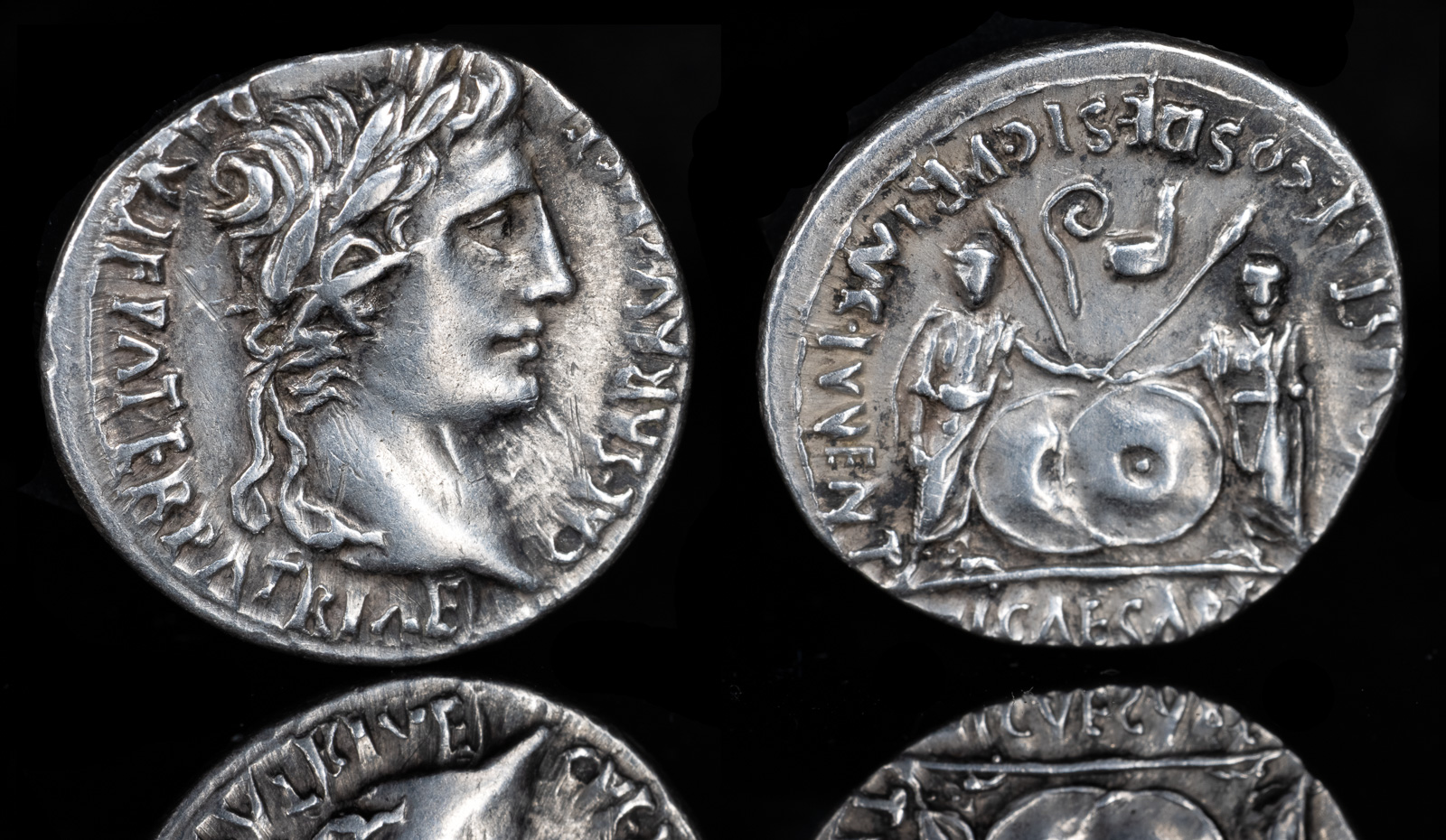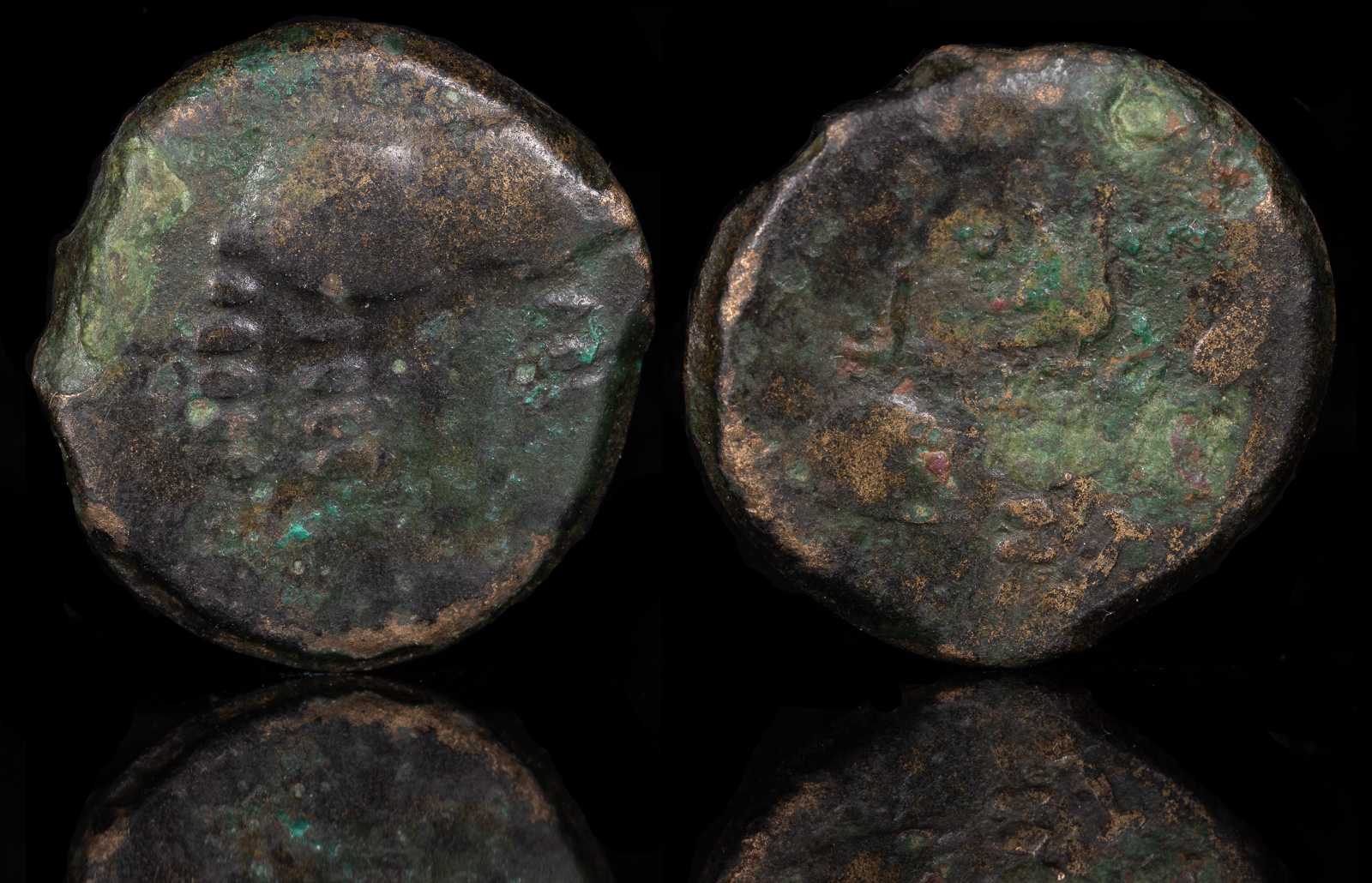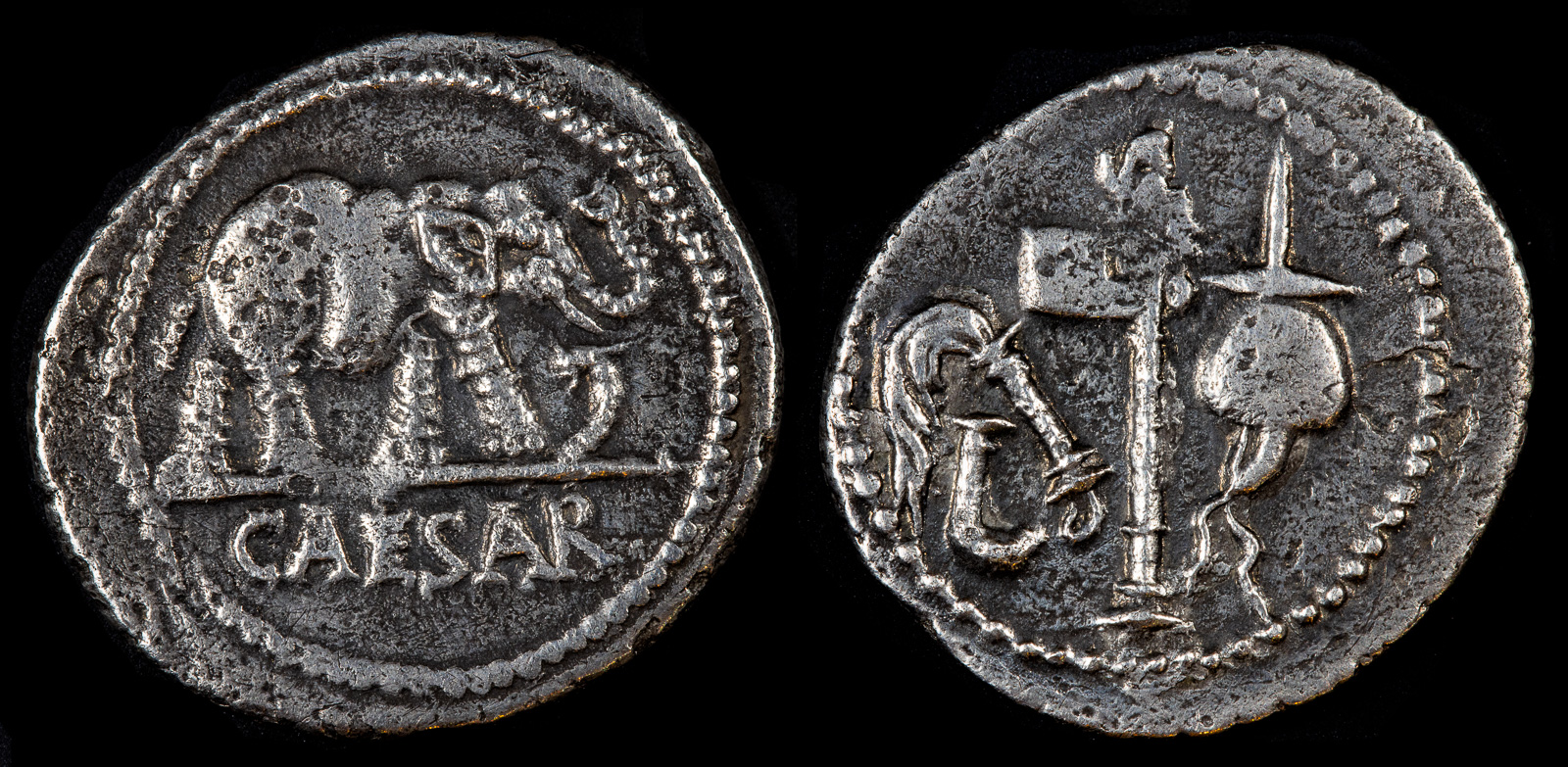Simpulum
View All Tags
In state and household rituals, the simpulum was used to pour libations onto altars, sacred fires, or the ground as offerings to deities. This act symbolized reverence and gratitude to the gods, seeking their favor or expressing thanks for blessings received. The simpulum was often associated with the priestly colleges, especially the Pontifices and Flamines, and its presence in ceremonies underscored the sanctity of the rituals they performed.
The simpulum also became a symbolic element in Roman art and coinage, representing piety and religious duty. It was frequently depicted alongside other ritual implements like the lituus (a curved staff used by augurs) and the aspergillum (a tool for sprinkling holy water). Such imagery served to emphasize the religious authority of figures like emperors or high-ranking priests, who often sought to portray themselves as devout and divinely favored leaders.

AUGUSTUS (27 BCE-14 CE)
Denarius. Lugdunum.
19mm 3.77g
Obv: CAESAR AVGVSTVS DIVI F PATER PATRIAE. Laureate head right.
Rev: AVGVSTI F COS DESIG PRINC IVVENT / C L CAESARES.
Caius and Lucius Caesar standing facing; two shields, two sceptres; lituus and simpulum above.
RIC² 209

Celtic Gaul. Treveri.
50-30 BCE
AE 16.51mm 3.23g
Obverse: Elephant walking right, trampling on horned serpent
Reverse: Simpulum, sprinkler, axe (surmounted by a wolf’s head), and apex (priest’s hat)
De la Tour 9235, RPC I 501

Julius Caesar AR Denarius.
Military mint travelling with Caesar, 49-48 BCE
Elephant advancing to right, trampling on serpent; CAESAR in exergue / Emblems of the pontificate: simpulum, aspergillum, securis (surmounted by wolf’s head), and apex. Crawford 443/1; CRI 9; BMCRR Gaul 27-30; RSC 49. 3.26g, 20mm, 2h.